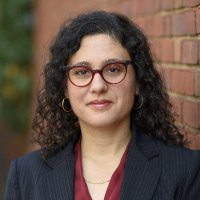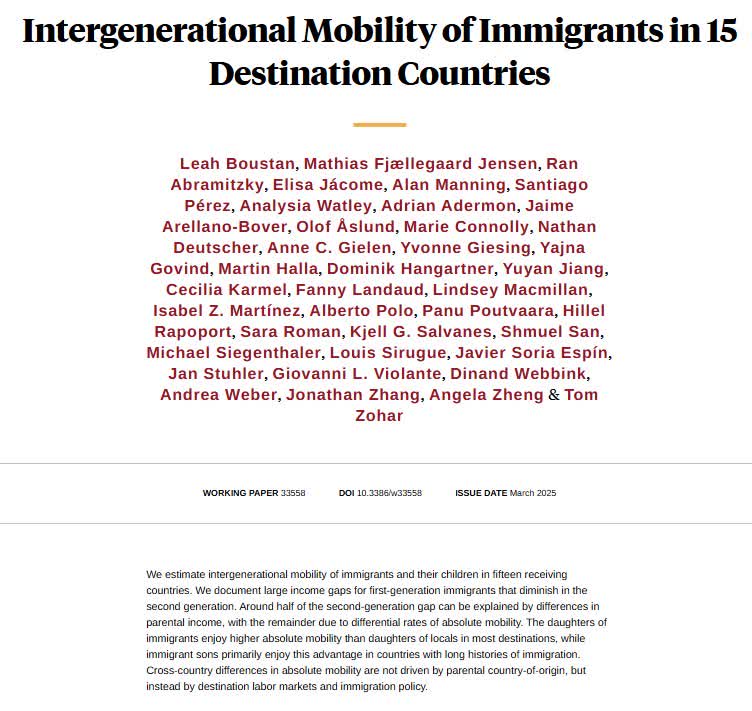
Leah Boustan
@leah_boustan
Author STREETS OF GOLD. Economic history @Princeton. Mom of 3. Jew. Talmud @leah_dafyomi 🍷 Kosi revaya
ID: 776192268420075520
https://www.hachettebookgroup.com/titles/ran-abramitzky/streets-of-gold/9781541797833/ 14-09-2016 22:53:52
33,33K Tweet
30,30K Followers
1,1K Following


Austin Kocher, PhD Apologies if it appeared on your list last year, but “Streets of Gold” by Leah Boustan and Ran Abramitzky perfectly combines empirical data with captivating stories, to provide practitioners immense pride in their work as well as the people we represent: amazon.com/Streets-Gold-A…

U.S. President-elect Donald Trump made immigration a cornerstone of his campaign. The question now is what will he actually do? Leah Boustan and Reihan Salam join host Sasha Polakow-Suransky on a new episode of Counterpoint to debate the new administration's next steps: podcasts.apple.com/us/podcast/how…





An overview of recent empirical and methodological advances in the study of historical intergenerational mobility trends, from Ran Abramitzky, Leah Boustan, and Tamar Matiashvili nber.org/papers/w33330


The opening of ethnic Catholic churches created immigrant enclave neighborhoods in the early 20th century. Residents experienced falling earnings but strengthened communal ties, from Ran Abramitzky, Leah Boustan, and @osea82 nber.org/papers/w33362



.Leah Boustan Osea Giuntella find Polish church-centered ethnic enclaves established from 1900-30 in the US hindered immigrants’ economic mobility, with an estimated “7% decline in earnings associated with a 10pp increase in own-ethnicity population share.” edwardconard.com/macro-roundup/…


New CEPR Discussion Paper - DP20003 Intergenerational mobility of immigrants in 15 destination countries Leah Boustan et al. ow.ly/StIR50VbOoK #CEPR_LE #CEPR_MG #EconTwitter


A pretty amazing figure from Leah Boustan et al. showing native immigrant income rank gaps across countries. USA looks pretty exceptional in this figure to me; immigrants start roughly on par with natives and then their children advance. nber.org/system/files/w…


We are very happy to start the RFBerlin Migration Forum with Leah Boustan as our first keynote speaker, presenting “Where are the Streets of Gold? Comparing Immigrant Assimilation in the US and Europe”. #MigrationForum


.Leah Boustan et al. study children born in 1979-83 in 15 counties, and find that absolute economic mobility is strongest for sons and daughters of immigrants in destinations that are historically “immigrant-receiving.” edwardconard.com/macro-roundup/…


Daughters of immigrants are more upwardly mobile than daughters of locals in most destinations. Sons of immigrants are only more upwardly mobile outside of continental Europe, from Leah Boustan, Mathias Fjællegaard Jensen, Ran Abramitzky, @elisajacome, Alan Manning, Santiago Pérez,



New sources of big data generate valuable new insights in urban economics, past and present, from Ran Abramitzky, Leah Boustan, and Adam Storeygard nber.org/papers/w33561



A timely event American Enterprise Institute this Thursday: Immigration & the American Dream. Princeton economist Leah Boustan discusses what the history of immigration to the US says about immigrants’ ability to assimilate and contribute to American life. What policy lessons can we learn from the



